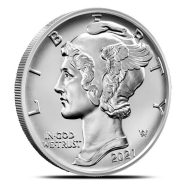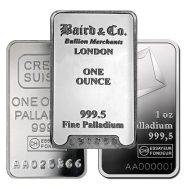

The majority of investors often fixate on gold when considering precious metal investments, while a comparable faction also shows interest in silver to diversify their portfolio. This inclination towards these metals is justifiable given the array of coins, bars, and rounds they offer. However, there exist other overlooked precious metals boasting remarkable purity and value. Palladium, for instance, frequently escapes investors’ radar, yet its appeal is gradually burgeoning. A closer inspection reveals a rising abundance of palladium coins and bars, signaling its emerging prominence in the investment sphere.
Palladium, a rare and radiant metal with a shimmering silvery-white hue, belongs to the esteemed platinum group metals, joining the ranks of platinum, rhodium, ruthenium, iridium, and osmium. Its discovery in 1803 is credited to William Hyde Wollaston. Today, primary palladium deposits dot strategic locations worldwide, including the Bushveld Igneous Complex in South Africa’s Transvaal Basin, the Stillwater Complex in Montana, USA, the Sudbury Basin and Thunder Bay District of Ontario, Canada, and the Norilsk Complex in Russia.
Palladium’s properties make it critical for many industries. It is one of the six platinum group metals (PGMs). All six PGMs are bunched together in the periodic table and are all very rare. Palladium’s specific properties include:
These characteristics make palladium ideal for various uses in your everyday life. The most common use of palladium, consuming about half of industrial consumption, is in the catalytic converters of fossil-fuel-powered automobiles. The palladium in the catalytic converters converts dangerous gases like carbon monoxide into far less harmful ones like carbon dioxide and water vapor. If you’re wondering why people steal catalytic converters, now you know – they’re doing it for the palladium!
These industrial purposes keep palladium in steady demand. And with ever-increasing emissions standards for cars and trucks, the need for catalytic converters isn’t going anywhere.
Palladium is also used in dentistry because of its resistance to corrosion, electronics due to its conductivity, and jewelry because of its natural coloring and density. Along with platinum, it is often used as an alternative to “white gold” or silver – often found in wedding rings and other higher-priced jewelry.
Of course, this makes it a perfect metal for investors and collectors alike. It is 15 times rarer than platinum and 30 times rarer than gold, making it a true treasure. The best way you can add palladium to your collection is by buying palladium coins and bars.
Palladium bars are produced by a wide range of mints around the world. While not as widely made as gold bars or silver bullion, palladium bars are a great way to round out any collection.
Because of their rarity and high value, palladium bars are only made in a few different sizes. Typically, you can find:
These bars are often minted alongside platinum by the major mints of the world, including:
Valcambi’s 50-gram CombiBars are among the most popular palladium bars in production today. These credit card-sized bars can be broken into 50 separate 1 gram bars, making them ideal for barter.
Fortunately for coin collectors, palladium coins are even more popular and accessible. Many are produced by government mints like the Royal Canadian Mint (RCM) and the U.S. Mint. Palladium coins are most commonly produced in 0.9995 fineness.
Popular examples of palladium coins include:
With palladium’s many industrial uses and its extreme rarity, it is likely to remain in demand for years to come. Its rarity – vastly less common than either platinum or gold – along with its crucial industrial uses and its inherent beauty make it a perfect precious metal investment option. It offers easy storage with its high price-to-weight ratio. And while not as common as gold or silver, palladium provides an excellent way to further diversify your precious metals collection.
Please feel free to reach out to BullionMax if you have any questions. You can call us at 800-729-3202, chat with us online, or email us directly.